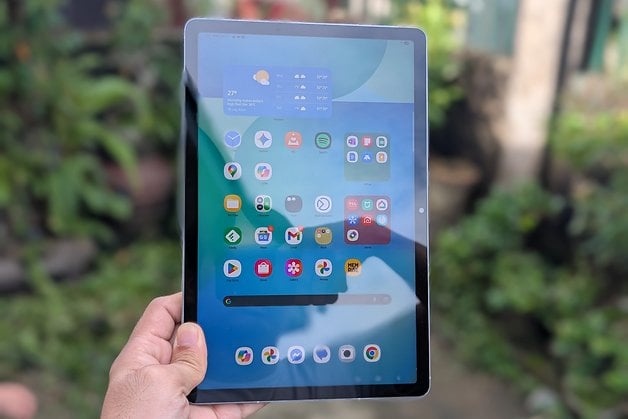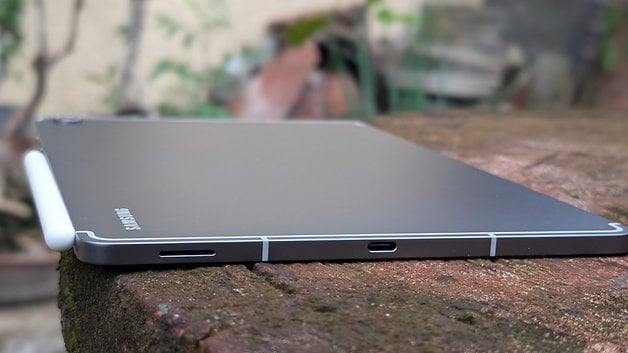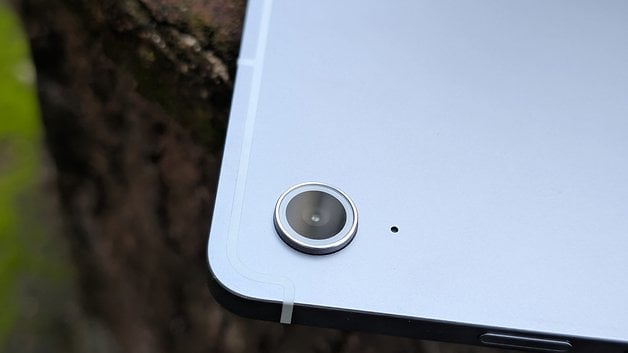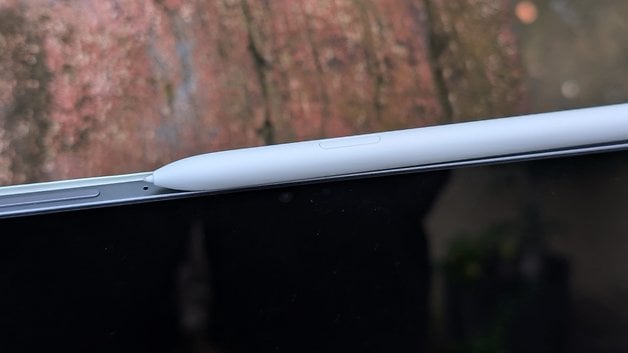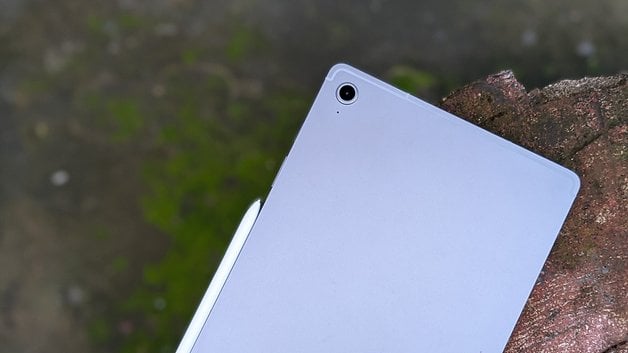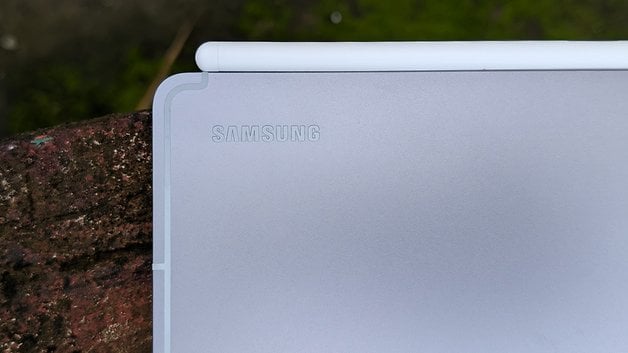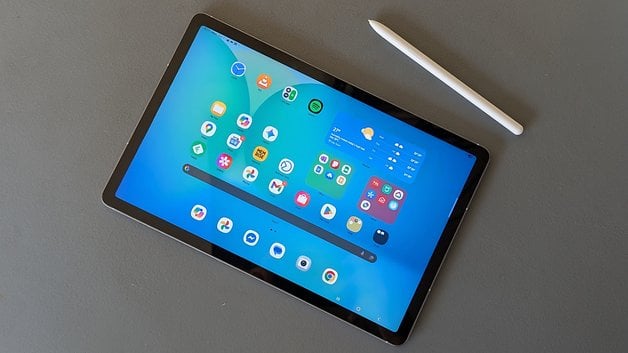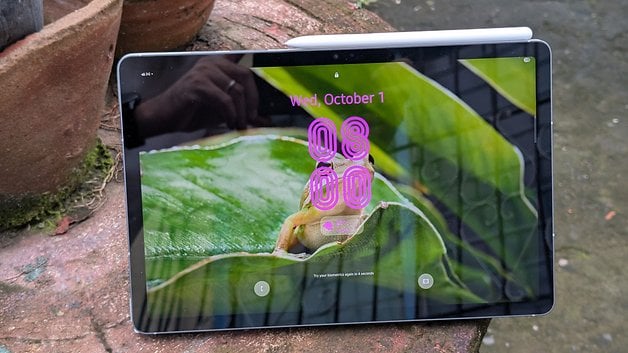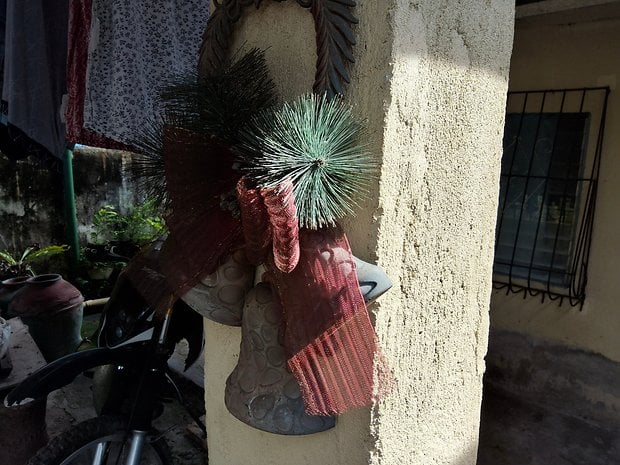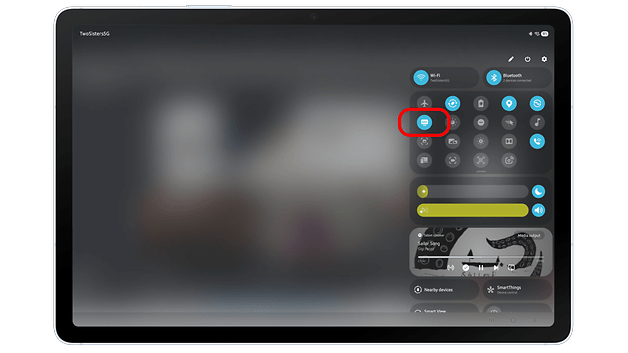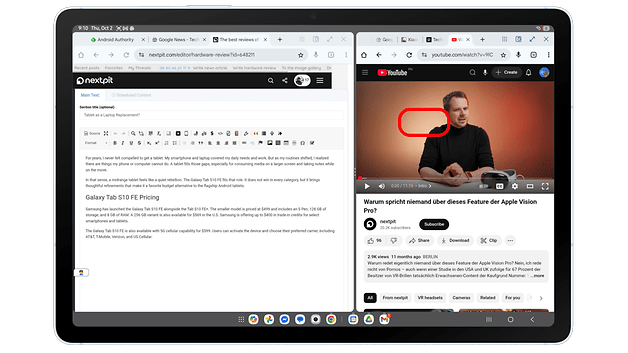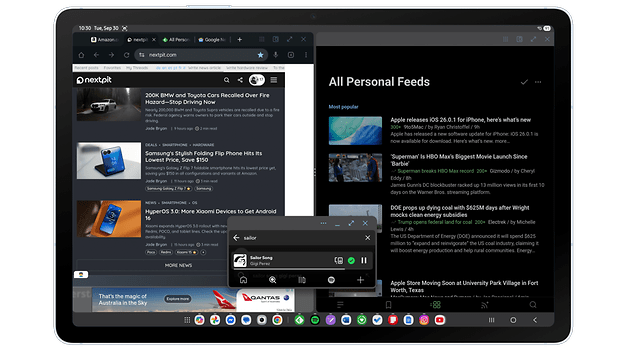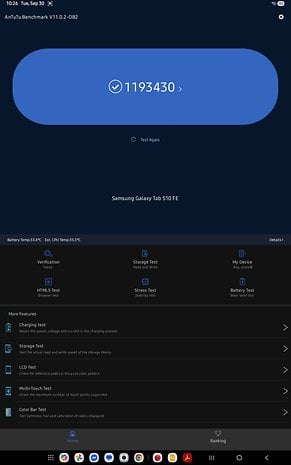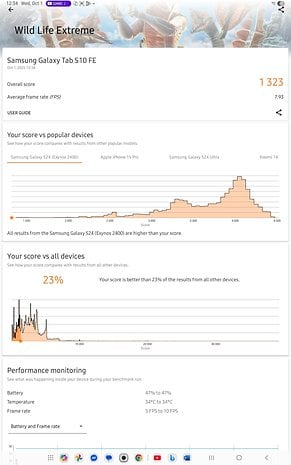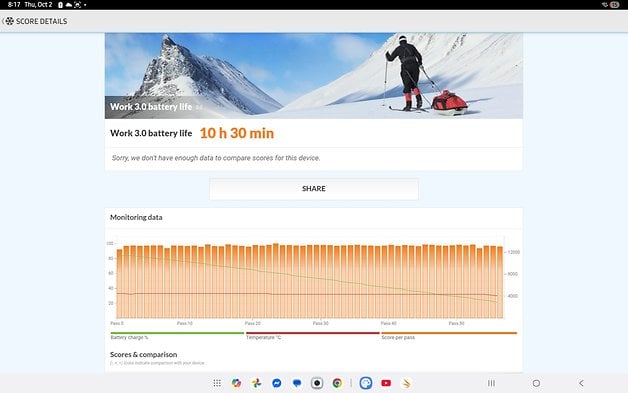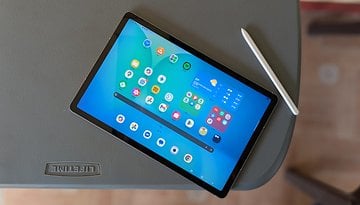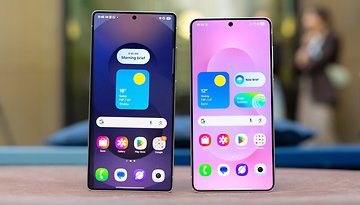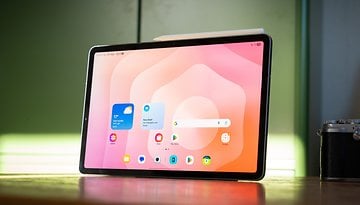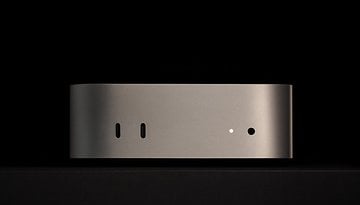Samsung Galaxy Tab S10 FE Review: Can It Replace Your Laptop?
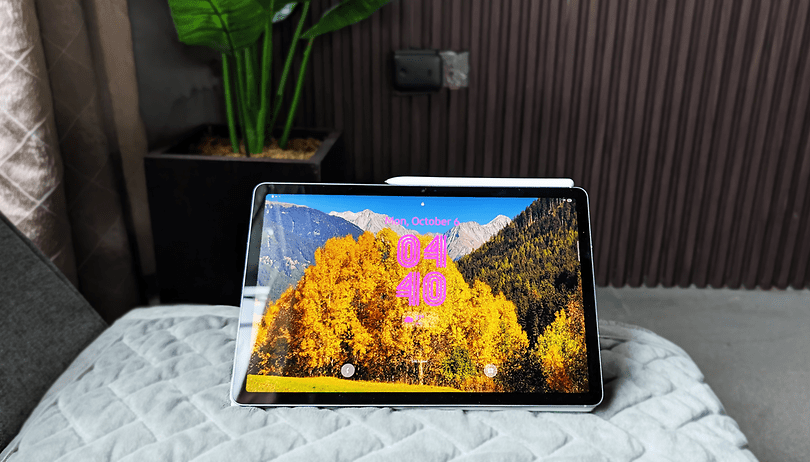

Manufacturers continue to push tablets as powerful machines and viable laptop replacements, thanks to more advanced chipsets and better displays. Samsung is among them, and with the Galaxy Tab S10 FE, it feels like the company is hitting its stride. The mid-range tablet does not reinvent the wheel, but it brings refinements, including a sleeker profile, more capable cameras, and a faster processor in a more affordable price tag. In this review, we will find out if those upgrades are enough to make it a true laptop alternative.
Good
- Premium build quality
- IP68 dust and water resistance
- 7 years of software support
- S Pen included
- Solid battery life
- DeX is fantastic
Bad
- Thick bezels for 2025 tablet
- AMOLED would be better

Tablet as a Laptop Replacement?
For years, I never felt compelled to get a tablet. My smartphone and laptop covered my daily needs and work. But as my routines shifted, I realized there are things my phone or computer simply can’t do. A tablet fills those gaps, especially for watching media on a larger screen and jotting down notes while on the move.
In that sense, a midrange Android tablet feels like a quiet rebellion, and the Galaxy Tab S10 FE fits that role. It doesn’t win in every category, but it brings thoughtful refinements that make it a standout budget alternative to flagship Android tablets. It also offers productivity perks for users who want to get the most out of their device, even for PC-like tasks. If you’re eyeing Samsung’s newest “Fan Edition” tablet, there’s more to uncover than you might expect.
Galaxy Tab S10 FE Pricing
Samsung has launched the Galaxy Tab S10 FE alongside the Tab S10 FE+. The smaller model is priced at $499 and includes an S Pen, 128 GB of storage, and 8 GB of RAM. A 256 GB variant is also available for $569 in the U.S. Samsung is offering up to $400 in trade-in credits for select smartphones and tablets.
The Galaxy Tab S10 FE is also available with 5G cellular capability for $599. Users can activate the device and choose their preferred carrier, including AT&T, T-Mobile, Verizon, and US Cellular.
Premium Design and Fast Display
As is often the case with Samsung’s recent tablets, the Galaxy Tab S10 FE shares its design language with both its flagship counterpart and predecessor. It features a metal frame and back panel, with the front protected by unspecified glass.
I remember holding the Tab S10 FE for the first time. It felt like a solid slab that weighed down my hand. I was not sure if I had gained forearm muscle or just gotten used to the weight of smartphones. But in fact, it is lighter than the Galaxy Tab S9 FE by 23 grams. It is also slightly thinner at 6 millimeters, though that is hard to notice.
Aside from the bezels, which feel thick and outdated for a tablet in 2025, there is little to critique in the design. The Tab S10 FE looks premium and well-built. It is even commendable that Samsung gave it IP68 dust and water resistance, which remains rare in tablets.
The 10.9-inch IPS LCD screen is unchanged from its predecessor. It supports a 1440 x 2304 pixels resolution in a 16:10 ratio and a 90 hertz refresh rate. It is protected by unknown glass, which initially worried me, given frequent S Pen use. But after a week, I have not noticed any scratches, which relieved my concerns.
The aspect ratio offers a roomier vertical scroll and better multitasking in landscape. Still, I wish Samsung would adopt a more square ratio like the OnePlus Pad or iPad Air. That would improve one-handed use for document management or e-book reading.
The LCD panel is not gonna win any crowns. Colors do not pop like they do on AMOLED displays, such as in the Galaxy Tab S11 that my colleague reviewed. However, the screen gets bright enough for outdoor use, and the apps and content felt crisp. Despite lacking true blacks and vivid colors, it is a solid display with decent sharpness and brightness.
Loud Speakers and Clear Photos
The AKG-tuned stereo speakers sound better than expected for a midrange device. I did not feel the need to connect external speakers when streaming anime or shows. In fact, I prefer its speakers over those on my Pixel 9 Pro XL or to my laptop speakers when listening to Spotify and watching YouTube.
The upgraded 13 MP rear camera, up from 8 MP, brings welcome improvements. It has more megapixels and supports AI-powered Best Face. The imaging setup is better than what you expect from a mid-tier tablet, mostly for documents or pet photos, but the quality is decent, even for video.
The 12 MP ultrawide selfie camera is placed on the longer bezel edge, which makes sense since I mostly use the tablet in landscape. It records crisp videos with up 4K resolution and delivers surprisingly decent pictures that are bright and with fine and slightly vivid quality, though sometime the graininess are easily noticeable in low light shots. The large and bright screen likely contributes to this, revealing more detail, but it's more of a compliment than a complaint.
There is a fingerprint sensor integrated into the power button on the longer side above the volume keys. I found it fast and convenient for unlocking the slab. Face unlock also works fast and accurately, both in portrait and landscape orientations.
Productivity Tools: Software, S Pen and DeX
Like most tablets, the Tab S10 FE is a joy for media consumption, e-book reading, and browsing. It also works well for messaging, though typing can be slow due to the wide key spacing. For longer writing tasks, I connect a wireless keyboard and mouse via Bluetooth without issue, and the experience improves exponentially.
During my review, I was running One UI 7 based on Android 15, which does not yet include the enhanced DeX mode introduced with Android 16. While some layouts differ between the two versions, most core functions should remain the same. I plan to update this review once I upgrade to Android 16. To be fair, I also used the device to write part of this review.
Paired with a standalone keyboard and mouse, DeX mode felt efficient and quite mature on the Galaxy Tab S10 FE. Enabling DeX mode provides a laptop-like interface. I can use split screen and floating windows as well as resize them more freely, mirroring the experience of a Windows computer. I can also run floating windows within split screen view, though it felt a bit forced with several windows running, given the sub–11–inch display size.
Many keyboard functions also work on the Tab S10 FE, including taking screenshots and Chrome actions like opening a new tab or minimizing. What I miss is full mouse support, as right-click functions have limited in-app controls support, such as in Chrome and Docs. However, right-click mimics the long-press touch gesture in Android, which works with most apps and the home screen.
Still, I feel the Tab S10 FE falls short of being a full laptop replacement. I crave a larger display, which the Tab S10 FE Plus offers, or I would need to plug into an external monitor. But for on-the-go use, the 10.9-inch screen is adequate, while the DeX mode dramatically improves my productivity.
The Galaxy Tab S10 FE includes the S Pen, a full-size version, and not the compact one in the Galaxy S25 Ultra. This gives it an edge over standalone laptops. While the S Pen lacks haptic feedback and pressure sensitivity, writing and sketching feel smooth and natural, even though I am not a visual artist. There is also a customizable button and pointer/cursor that I can adjust using the Good Lock app.
Samsung Notes supports AI-powered features for the S Pen, such as handwriting alignment and Circle to Search, which students and writers will appreciate. The S Pen also enables AI-assisted math and physics homework help, with the computations automatically saved in your notes.
Surprisingly Good Graphics
Internally, the headline upgrade is the new 4 nm Exynos 1580 processor, the same chip found in the Galaxy A56. It is a full step up from the Exynos 1480, using a tri-cluster eight-core architecture led by the newer Cortex A720 core clocked up to 2.9 GHz. The new Xclipse 540 GPU incorporates a newer RDNA3 microarchitecture unit that should uplift the graphics performance.
I acquired the 8/128 GB configuration, which has a usable space of 106 GB. The storage was more than sufficient for all the necessary apps and games. Still, I appreciate that the option for expandable memory remains. With support for up to a 2 TB microSD card, I can easily expand the storage whenever needed.
In benchmarks, the Tab S10 FE scores 1,316 for single core and 3,810 for multicore in Geekbench. It trails the Xiaomi Pad 7 with a Snapdragon 7 Plus Gen 3 chip but closely matches the 2022 Galaxy Tab S8, powered by Snapdragon 8 Gen 1.
In testing, the tablet rarely slowed down. It felt stable and instantaneous, even when switching to DeX mode and running two windows side by side. However, One UI 7 is not as snappy when launching or switching apps compared to my Galaxy Z Fold 5 or Pixel 9 Pro XL. That may be due to software optimization or the modest 8 GB RAM, but generally, it's difficult to notice for most users.
What surprised me most was its handling of graphics-intensive tasks. The Tab S10 FE performed better than expected, nearly on par with the Xiaomi Pad 7, but performed better than the Google Pixel Tablet.
Samsung claims the graphics unit is 37% more powerful than its predecessor and more efficient overall. While I do not have a reference device with the older chip, I felt the difference when playing Genshin Impact on moderate to high settings. There were slight stutters during loading, but gameplay was generally smooth, and I can set high graphics settings, with the game very playable, but with the load marked as overload.
The chip also handles AI workloads better, thanks to an enhanced neural processing unit with higher throughput. This enables new AI features like Best Take in camera and S Pen enhancements, along with the Galaxy AI suite.
| Galaxy Tab S10 FE | Galaxy Tab S11 | Galaxy Tab S9 FE | Xiaomi Pad 7 | OnePlus Pad 2 | |
|---|---|---|---|---|---|
| SoC | Exynos 1580 (4 nm) | MediaTek Dimensity 9400+ (3 nm) | Exynos 1380 (5 nm) | Snapdragon 7+ Gen 3 (4 nm) | Snapdragon 8 Gen 3 (4 nm) |
| AnTuTu v11 | 1,193,430 | - | - | 1,924,174 | 1,924,174 |
| 3DMark WildLife Extreme Stress Test | Best loop: 5,251 Worst loop: 417 (39.3%) |
Best loop: 6,644 Worst loop: 4,451 |
Best loop: 2,954 Worst loop: 2,981 |
- | Best loop: 4,609 Worst loop: 3,759 (81.6%) |
| Geekbench 6 | Single: 1,316 Multi: 3,810 |
Single: 1,610 Multi: 6,086 |
Single: 1,024 Multi: 2,940 |
Single: 1,846 Multi: 5,131 |
Single: 2,133 Multi: 6,353 |
| Geekbench 6 GPU | 6,335 | 20,366 | 2,994 | 7,859 | 15,731 |
Long Battery Life
With an 8,000 mAh battery, Samsung claims up to 20 hours of video playback in the Galaxy Tab S10 FE. That is better than the rated figure in the Galaxy Tab S11 despite its larger battery. Of course, actual runtime depends on the usage and routines. But with the usual workload of browsing and writing an article on CMS with a mix of video and music streaming, I could get between three and four days before the wall.
While in battery test with PCMark, the run time is about 10 hours and 30 minutes. This is better than the Xiaomi Pad 7 with a slightly larger battery, which scored about 10 hours.
Charging speed has improved since the Galaxy Tab S9 FE. The Tab S10 FE supports 45-watt wired charging and Quick Charge 2.0. I first tried a generic 65-watt charger, but super-fast charging did not kick in, and it painfully took over three hours. I switched to a Vention 100-watt GaN adapter. I was relieved to see a full charge in just about 90 minutes, which is in line with the Tab S11 that my colleague Benjamin tested.
| Galaxy Tab S10 FE | Galaxy Tab S9 FE | Galaxy Tab S11 | Xiaomi Pad 7 | |
|---|---|---|---|---|
| 5 min |
|
|
|
|
| 30 min |
|
|
|
|
| 1 h |
|
|
|
|
| Full charge |
|
|
|
|
| PC Mark battery test |
|
|
- |
|
Samsung Galaxy Tab S10 FE technical specifications
| Samsung Galaxy Tab S10 FE | |
|---|---|
| Image |

|
| Display |
|
| SoC |
|
| Memory |
|
| OS |
|
| Camera |
|
| Selfie camera |
|
| Battery |
|
| Connectivity |
|
| IP certification |
|
| Dimensions and weight |
|
Should You Buy the Galaxy Tab S10 FE?
The Galaxy Tab S10 FE does not pack the fastest chipset or the brightest display, but for $500, it nails the essentials. It offers a flexible Android operating system with rich keyboard and mouse support, reliable performance, long battery life, and a beautifully crafted build. Add an S Pen, and you have a portable digital notebook and canvas for drawing and note-taking.
Sure, it’s not a true workhorse for intensive tasks like photo or video editing, but it’s more than capable of handling what I mostly need — browsing the internet, streaming my favorite series, note-taking, and running multiple windows to get work done. It essentially covers what a laptop can offer, making it a solid choice for casual users and students.
While I would love to see AMOLED, thinner bezels, and even a flagship-tier, powerful processor in the next version, those upgrades would likely raise the price of the Samsung tablet. For anyone seeking a portable and flexible machine, the Galaxy Tab S10 FE is already a solid recommendation.

